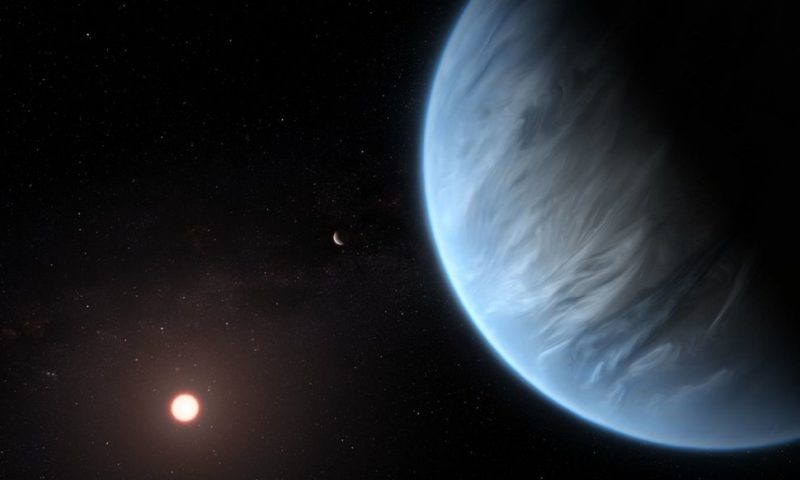Researchers warn that the planet, named K2-18b, is not ‘Earth 2.0.’
A PLANET ABOUT EIGHT times the mass of Earth is the only known world orbiting a star outside of the solar system to have both water and temperatures that could support life, according to new research.
The planet, named K2-18b, was discovered in 2015 by NASA’s Kepler space telescope. In a study published Wednesday in the journal Nature Astronomy, researchers looked at data from the Hubble Space Telescope to analyze the chemicals and molecules in the planet’s atmosphere, where they found the molecules that makeup water vapor. Researchers think nitrogen and methane could be there as well, but those haven’t yet been detected.
It is a thrilling discovery for scientists searching the universe for extraterrestrial life. But they say K2-18b, which is about 110 light-years away, is not a second Earth.
“Finding water in a potentially habitable world other than Earth is incredibly exciting,” study author Angelos Tsiaras said in a statement. “K2-18b is not ‘Earth 2.0’ as it is significantly heavier and has a different atmospheric composition. However, it brings us closer to answering the fundamental question: Is the Earth unique?”
Water is one of the building blocks for life on Earth, but that doesn’t mean K2-18b will look like the big blue planet or contain life. It likely isn’t rocky like Earth and doesn’t have similar bodies of water. It also might be exposed to more radiation than Earth thanks to the red dwarf star it orbits.
“This study contributes to our understanding of habitable worlds beyond our Solar System and marks a new era in exoplanet research, crucial to ultimately place the Earth, our only home, into the greater picture of the Cosmos,” Tsiaras said.
NASA’s Transiting Exoplanet Survey Satellite, or TESS, recently took over the planet-hunting reigns from the Kepler telescope. Researchers expect TESS to discover hundreds of more planets to be studied for similar features.
“With so many new super-Earths expected to be found over the next couple of decades, it is likely that this is the first discovery of many potentially habitable planets,” study co-author Ingo Waldmann said in a statement.

